Discover how to enhance customer satisfaction and loyalty by optimizing each touchpoint in the customer journey. Learn strategies for mapping, personalizing, and streamlining interactions to elevate your brand.

Every time a customer interacts with your brand—whether they’re browsing your website, reading reviews, or chatting with customer support—they form an opinion about you. Fine-tuning these interactions creates a seamless, personalized experience that enhances customer satisfaction, loyalty, and your overall success.
Forrester Research states we’ve entered the "Age of the Customer," where the most successful businesses are those that understand and serve customer needs better than competitors (Forrester, 2022). This guide will help you master the art of optimizing every step of your customer journey.
A customer touchpoint is any moment when someone connects with your brand. This could be anything from finding your website to engaging with your social media or getting help after a purchase. Each of these interactions presents an opportunity to build trust, add value, and encourage customers to choose you again.
Studies show that businesses offering excellent customer experiences see revenues rise by 4-8% more than their competitors.
Negative experiences at any point can cost you sales and harm your brand's reputation.
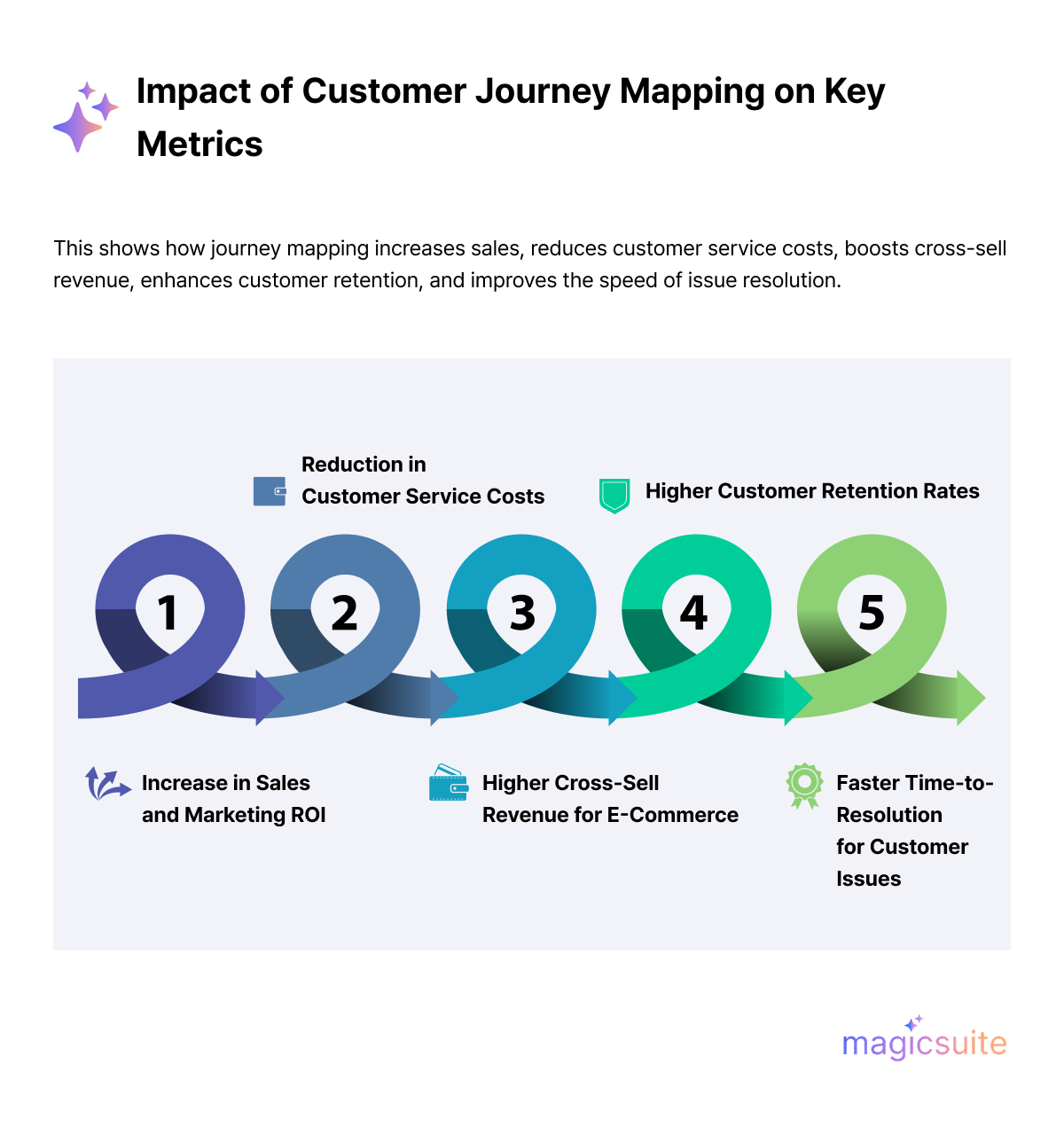
Customer journey mapping demonstrably boosts business performance, leading to 87% higher sales and marketing ROI for retailers, a 15-20% reduction in customer service costs, and a 56% increase in e-commerce cross-sell revenue. It also results in 50% higher customer retention and 30% faster issue resolution.
Optimizing every touchpoint means:
Get ready to transform how your customers see your brand!
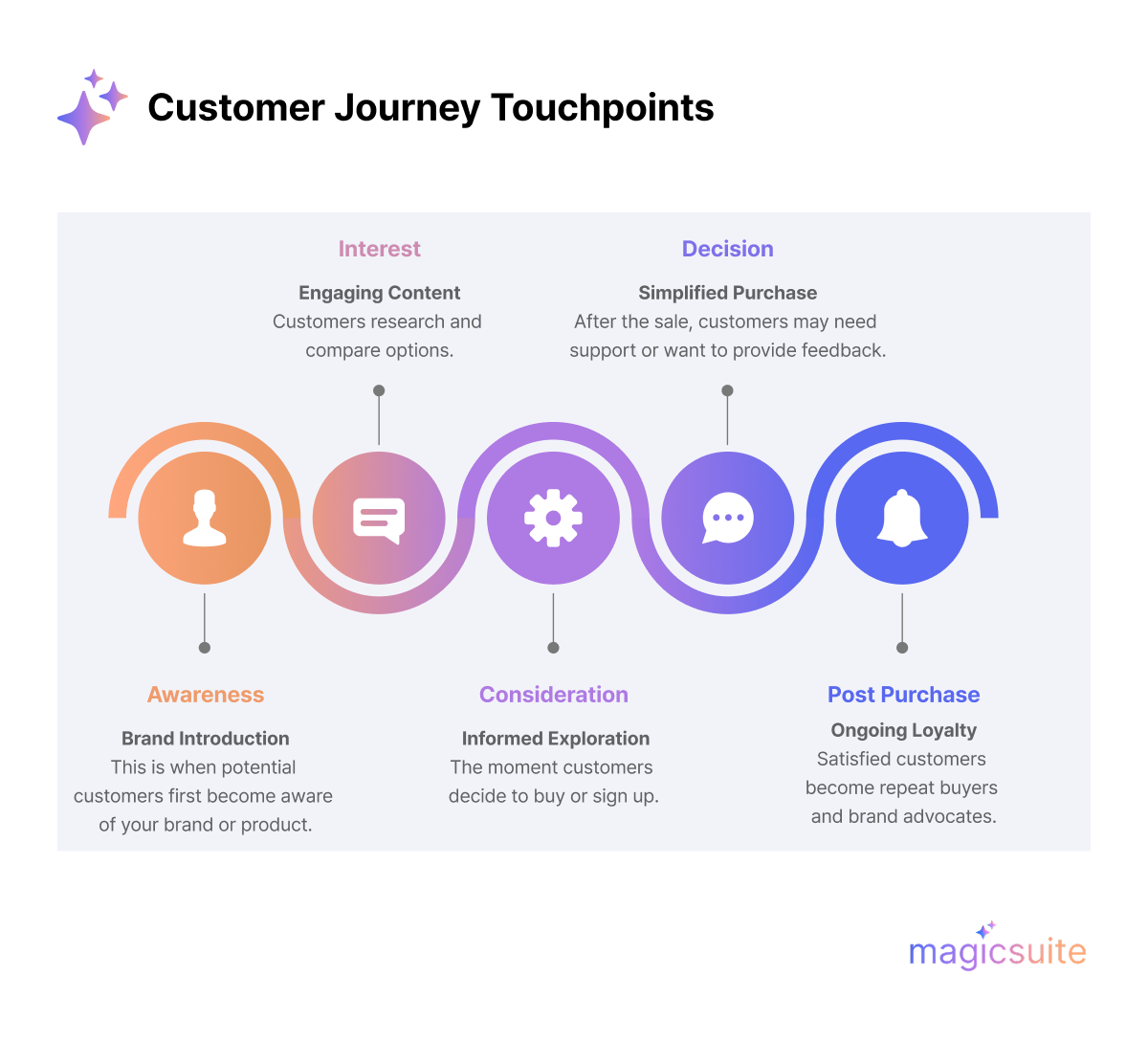
The customer journey is typically divided into five stages:
This is when potential customers first become aware of your brand or product. Touchpoints include:
Customers research and compare options. Touchpoints here include:
The moment customers decide to buy or sign up. Key touchpoints:
After the sale, customers may need support or want to provide feedback. Touchpoints include:
Satisfied customers become repeat buyers and brand advocates. Touchpoints here:
Each stage has multiple touchpoints, and optimizing them ensures customers have a smooth, positive experience that encourages progression to the next stage.
Before optimizing, you must understand your current customer journey in detail. Mapping the journey helps you visualize every interaction and identify where customers face challenges or drop off.
How to Map Your Customer Journey
Tools for Journey Mapping
Example:
A retail brand mapped their customer journey and discovered that many customers abandoned their carts due to a complicated checkout process. But when they prioritized this touchpoint, they simplified the checkout flow, resulting in a 20% increase in completed purchases.
Data is the foundation for optimization. Collecting and analyzing customer data helps you understand how customers interact with your brand and where improvements are needed.
Types of Data to Collect
How to Use Data Effectively
Tools for Data Collection and Analysis
Example
A SaaS company used session recordings to discover that users were confused by their onboarding process. They redesigned the onboarding flow with clearer instructions, resulting in a 30% increase in user retention within the first week.
Personalization tailors the customer experience based on individual preferences, behaviors, and needs. It makes customers feel valued and understood, which increases engagement and conversions.
Personalization Strategies
Benefits of Personalization
Example
Amazon’s recommendation engine personalizes product suggestions based on browsing and purchase history, accounting for a significant portion of their sales.
Also read: 10 Lessons Businesses Can Learn from Amazon Customer Service
Complex or confusing touchpoints cause customers to abandon journeys. Simplification focuses on removing unnecessary steps and making interactions intuitive.
Key Areas to Simplify
Example: Miro’s personalized onboarding flow asks users about their role and goals, then guides them through relevant features, improving engagement.
Example: A financial services firm improved mobile loan applications by redesigning forms and adding AI help prompts, leading to a 203% increase in completed applications.
Mobile devices, email communications, and chatbots are among the most critical and frequently used touchpoints today. Here are some of the effective ways that you can optimize these touchpoints:
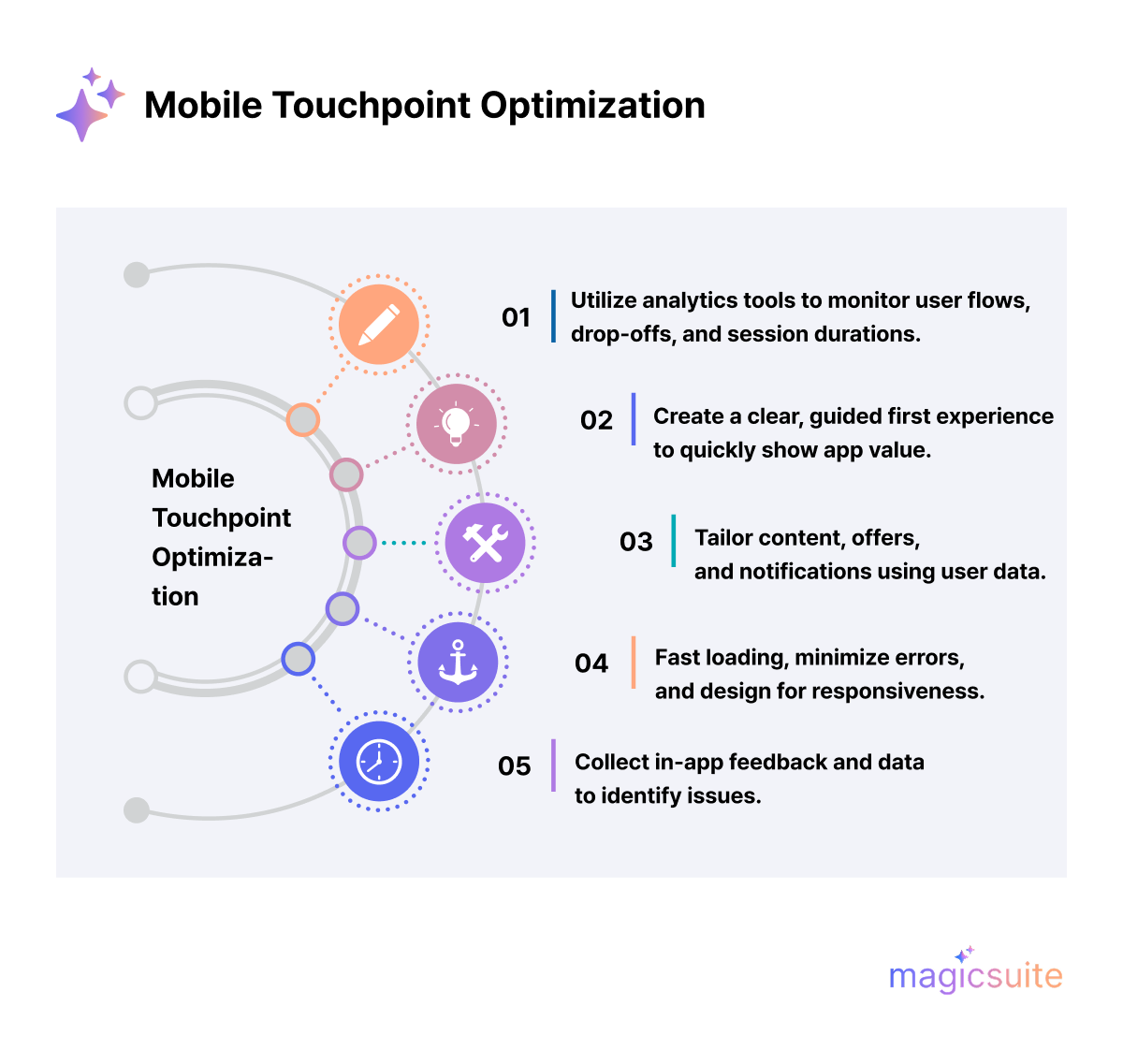
Mobile devices have become the primary way many customers interact with brands. Optimizing the mobile customer journey is crucial for meeting user expectations of speed, ease, and personalization.
Benefits of Personalization
Understand how users discover, engage, and convert on your mobile app or site by mapping their journey. Utilize analytics tools to monitor user flows, drop-offs, and session durations. Regularly update these maps based on user feedback and behavior data to stay aligned with evolving needs.
First impressions count. A clear, simple onboarding process helps users quickly understand your app’s value, reducing abandonment. Provide step-by-step guidance, tooltips, and easy navigation to foster engagement from the start.
Use customer data to tailor content, offers, and notifications. Dynamic interfaces that adapt to user preferences increase relevance and retention. For example, personalized push notifications based on past behavior encourage return visits and deeper engagement.
Optimize loading times, minimize crashes, and ensure responsive design. Frustrations with slow or buggy apps are a major cause of user churn. Accessibility features also broaden your audience and improve satisfaction.
Collect in-app feedback, reviews, and usage data to identify pain points and opportunities. Use this data to iterate and refine the mobile experience continually
Example: Starbucks’ mobile app seamlessly integrates ordering, payment, and loyalty rewards, creating a smooth omnichannel experience that drives 30% of their orders via mobile.
Example: Amazon’s recommendation engine personalizes product suggestions based on browsing and purchase history, accounting for a significant portion of their sales.
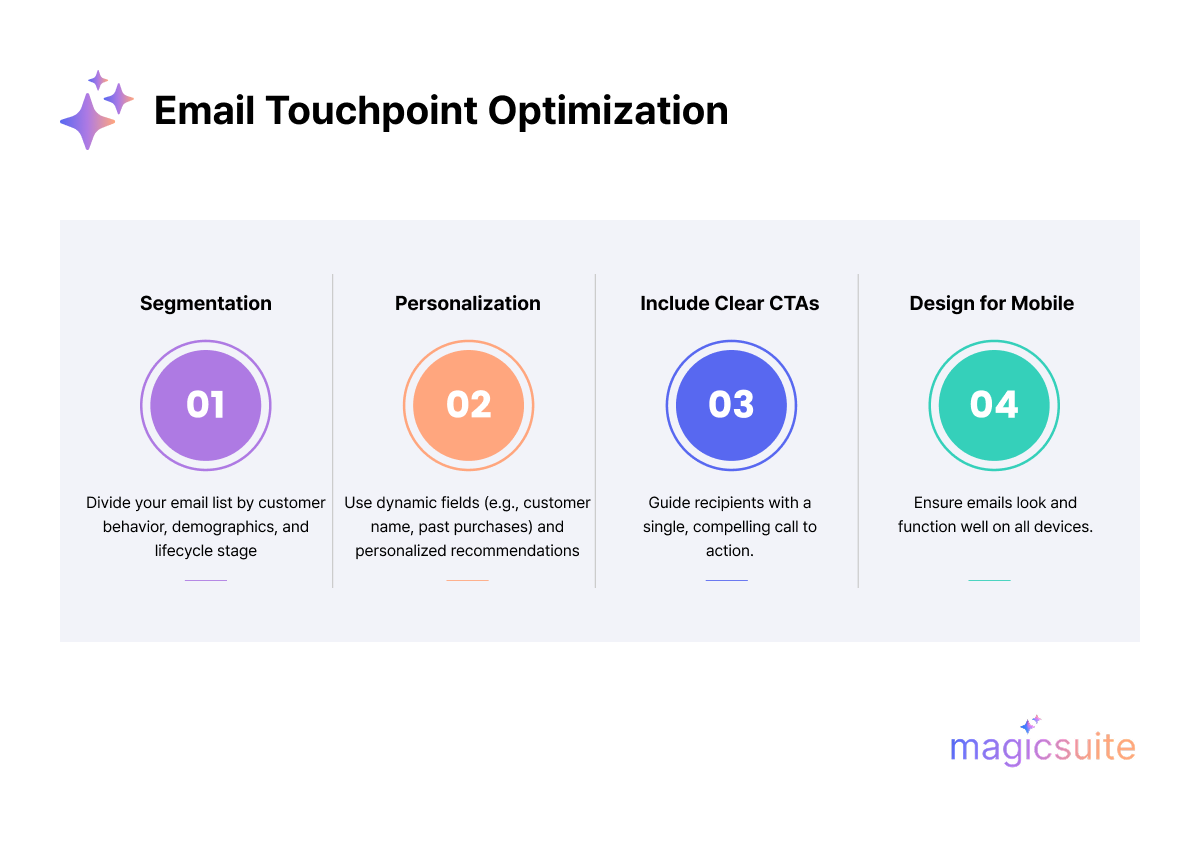
Email remains one of the most effective channels for nurturing leads and engaging customers throughout their journey. Optimizing email touchpoints ensures your messages resonate and drive action.
Divide your email list by customer behavior, demographics, and lifecycle stage. Tailored content outperforms generic blasts, resulting in higher open and click-through rates.
Use dynamic fields (e.g., customer name, past purchases) and personalized recommendations to make emails relevant and engaging.
Every email should have a clear, compelling CTA that guides the recipient toward the next step in their journey.
Since many users check email on mobile, ensure a responsive design for easy reading and interaction on any device.
Set up triggered emails based on user actions (e.g., welcome series, cart abandonment reminders) to nurture leads and recover lost sales.
Use A/B testing for subject lines, content, and send times. Track open rates, clicks, conversions, and adjust accordingly.
Chatbots have become vital for providing instant, 24/7 customer support and personalized interactions. However, not all chatbots deliver a seamless experience. AI-powered chatbots like MagicTalk combine marketing automation with intelligent escalation to human agents, creating a balanced and effective customer service touchpoint.
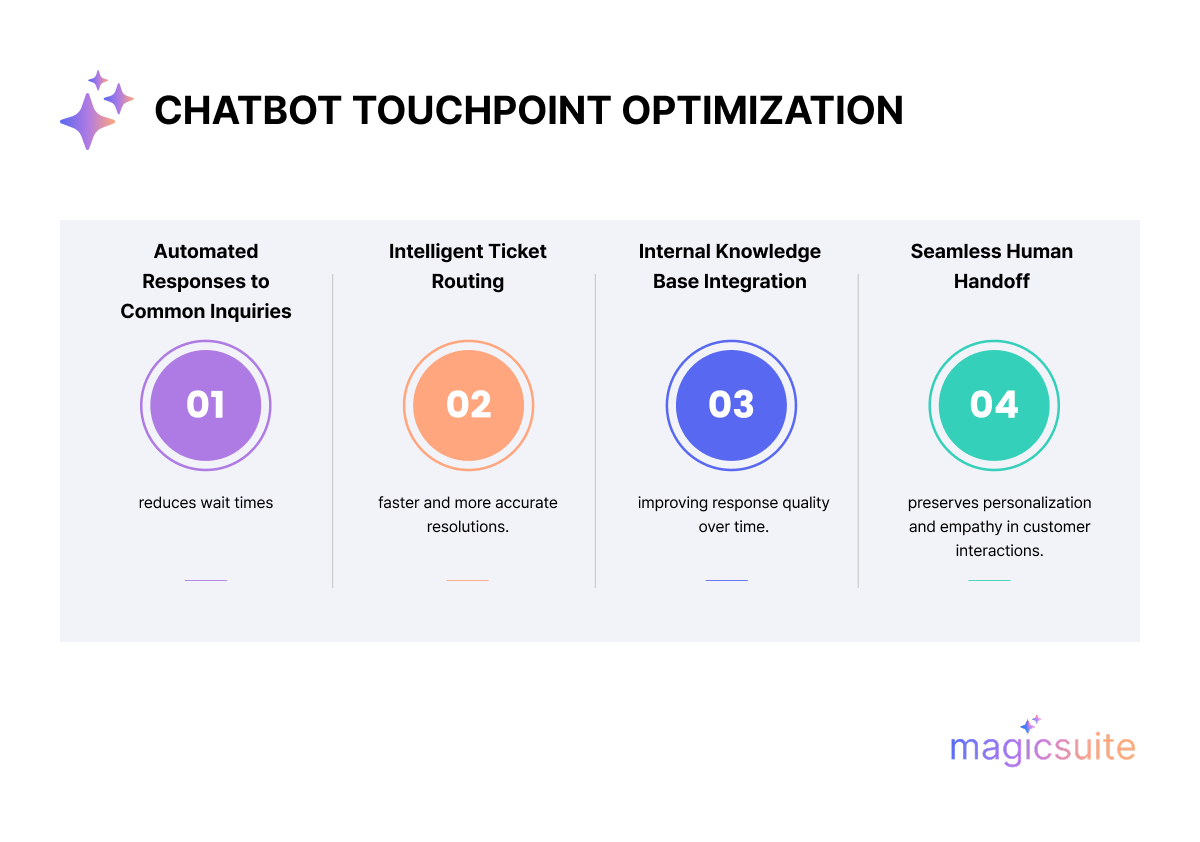
MagicTalk utilizes AI trained on your FAQs, documentation, and past resolved tickets to answer routine questions instantly. This reduces wait times and frees human agents to handle more complex issues.
When queries require human attention, MagicTalk routes tickets to the most appropriate agent or department, ensuring faster and more accurate resolutions.
MagicTalk maintains and updates an internal knowledge base that AI uses to find answers, improving response quality over time.
Automating repetitive tasks and providing AI-driven suggestions empowers customer service teams to work more efficiently and deliver exceptional experiences.
Complex or sensitive issues are escalated smoothly to human agents, preserving personalization and empathy in customer interactions.
Benefits of Using AI Chatbots like MagicTalk:
Example: A company using MagicTalk can automatically resolve common billing questions instantly, while routing complex technical issues to specialists, thereby dramatically improving first-contact resolution rates and customer satisfaction.
Optimizing every customer journey touchpoint—from awareness to loyalty—is a powerful strategy to differentiate your brand, increase conversions, and build lasting customer relationships. Remember, the journey is continuous. Proactive monitoring, testing, and iteration ensure your touchpoints evolve with your customers’ needs, keeping your brand ahead in a dynamic marketplace.
Start today by auditing your current touchpoints. The result will be a customer journey that not only meets but exceeds expectations.

Luke is a technical market researcher with a deep passion for analyzing emerging technologies and their market impact. With a keen eye for data and trends, Luke provides valuable insights that help shape strategic decisions and product innovations. His expertise lies in evaluating industry developments and uncovering key opportunities in the ever-evolving tech landscape.